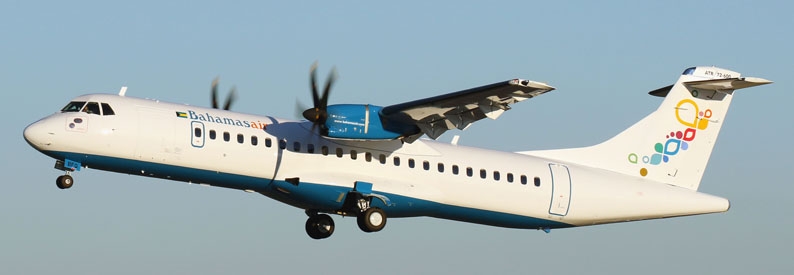Bahamasair allocated another $30mn in state aid

Bahamasair (UP, Nassau Int’l) has been granted USD30 million in state aid for the 2021/2022 fiscal year of which USD20 million will be used to fund loans for its Avions de Transport Régional fleet.
This follows a government grant of more than USD60 million to the airline during the 2020/2021 fiscal year to support both its operations and the retention of employees, according to the 2021/2022 budget presented to the country’s House of Assembly by Tourism and Aviation Minister Dionisio D’Aguilar.
“In this upcoming budget cycle, fiscal year 2021/2022, the government is allocating USD30 million to Bahamasair. This is due to prolonged suppressed operations resulting from COVID-19. However, we are specific in how this support should be used. USD20 million will be used to fund the ATR loan structure and the remaining USD10 million will assist with operational support for the Family Islands. The government understands that the airline will not fully recover from the effects of the pandemic until there is a complete return to Bahamasair’s full schedule complement of flights. It was, and continues to be, our hope and expectation that Bahamasair will be able to reform itself to require less than the yearly sums allocated — with the ultimate goal of it becoming a self-sustaining and profit-generating enterprise,” he said.
The state carrier has a fleet of three ATR42-600s and two ATR72-600s, plus two B737-500s and two B737-700s, leased from AerCap and GECAS respectively, according to ch-aviation fleets advanced data.
D’Aguilar said Bahamasair has long been a drain on the state coffers. This is an issue that has sparked much public debate on whether it should be restructured to make it profitable or if it should be privatised, while others consider it a vital transport and commercial link for the sparsely populated Family Islands.
During 2020 and part of 2021, the airline was either grounded or operated at less than 35% capacity due to COVID-19 travel restrictions. This resulted in revenue streams of only USD60 million for 2019-2020 (down 27%) and USD12.8 million for July 2020 to April 2021 (down 84%) compared to the fiscal year of 2018-2019.
Its performance during the peak summer months of July and August 2021 continued to be down 35% to USD5/6 million compared to USD9 million in the same period in pre-COVID times in 2019, Bahamasair chairperson Tommy Turnquest told Tribune Business.
This was despite load factors of around 80% on its routes to the US – in particular Miami Int’l, Fort Lauderdale Int’l, and Orlando Int’l – resulting from cruise lines Royal Caribbean and Crystal Cruises deciding to home-port in Nassau. Commented Turnquest: “Some flights were chock a block for those routes. Marsh Harbour to West Palm Beach Int’l was also quite good. That’s starting to come back as well. June, July, and August, November, and December, and whichever month Easter falls into, is when we make it.”
Load factors on domestic inter-island routes in August had been on average around 50% with San Salvador Int’l at 40-45%, whereas 70% load factors had been the norm on inter-island routes before the health crisis.
Travel restrictions continue to prevent Bahamasair from flying to Port au Prince, Haiti and it remains restricted to one fortnightly flight to Cuba compared to six weekly flights it had been operating between Holguin, Havana Int’l, and Santa Clara de Cuba prior to the pandemic. The Bahamas’ own emergency orders prevent flights to Haiti. The loss of business from Cuba and Haiti was having “a significant impact” on Bahamasair’s bottom-line as both had been amongst its highest-yield markets before COVID-19, added Managing Director, Tracy Cooper.
“So we’ve seen a fall-off in the domestic market but that’s to be expected because domestic travel costs are a bit higher and COVID concerns among many Bahamians are pretty prominent,” he said. “Overall we did relatively well; a little bit better than expected. We were completely shut down for most of last year, so anything happening this year is an improvement. We’re definitely seeing better financial results year-over-year, but that is to be expected.”
Cooper said the traditional post-summer drop-off in load factors was expected, especially given ongoing COVID-19 uncertainty and the end to Royal Caribbean’s home-porting, however, he was optimistic that the 2022 winter holiday season would bring a rebound.
